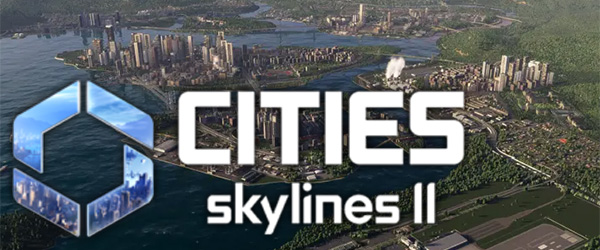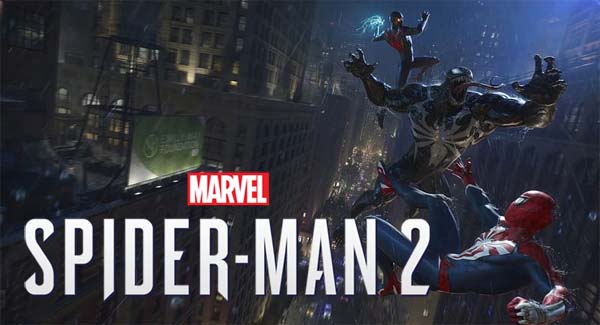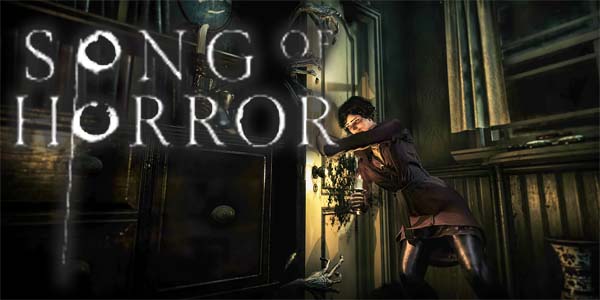
I've been playing Cities: Skylines for almost 10 years. As soon as I started playing it, I recognized it as the definitive city-building game. It blew its contemporaries, such as SimCity (2013) and Cities XL out of the water. It was a smash success that developed a massive following and spawned 11 full expansions, 4 mini-expansions, 21 asset packs, numerous music packs, and thousands of player-created mods and custom assets.
Creating a sequel to a game that is so beloved and content-rich can be challenging or daunting. Sequels to extensively-expanded games, such as any given entry of The Sims, Civilization, Crusader Kings, World of Warcraft, Rock Band, and so forth, run the extreme risk of feeling bland, empty, and incomplete compared to their content-rich and/or mechanically-complex predecessors. This can leave the sequel feeling underwhelming to long-time audiences, who might return to the older game because they crave the extensive, familiar content. The Sims in particular is infamous for stripping out popular expansion content, and then selling that content back to consumers again (and again) as an expansion pack for the sequel. The most notable example is probably that every Sims game has a "Pets" expansion, because EA could never bite the bullet and just put dogs and cats in the vanilla launch of a sequel.
Sequels to expanded games often strip out popular content to re-sell as expansions.
The sequel to Cities: Skylines is a bit of a mixed bag in this regard. On the one hand, yeah, a lot of content from the original game is absent from the sequel, and the options for what players can build can feel a bit sparse. On the other hand, the vanilla release of Cities: Skylines II retains something from almost every one of the original game's expansions. It even includes content and mechanics that were part of some of the smaller content packs and from popular mods.
The vanilla game includes a day/night cycle that was introduced in the original's After Dark expansion. Some of the economic models of the After Dark and Industries expansions have been expanded in scope to apply to the entire game, thus alleviating some of the need for explicit tourism, leisure, or specialized industry districts. It took the winter themes of Snowfall and fleshed it out into a full seasonal cycle. It includes some of the weather and disaster events from Natural Disasters, as well as some of the early-warning and shelter infrastructure. It includes modular upgrades and customizations to certain buildings and infrastructure, as well as large industrial areas, that fills a similar role as the modular areas of Parklife, Industries, Campus, and Airports (though I'll talk more about this mechanic later in the review). It includes pedestrian roads from Plazas & Promenades. It includes eco-friendly variations of utilities that were part of the Green Cities expansion. And of course, it has road-building and transit-planning tools that largely leave Mass Transit in the dust.
It even includes sports parks and parking lots, which were late DLC content released for the original game in the last couple years. And the road-building and traffic-management tools have much of the functionality from the popular "Road Anarcy" and "Network Extension" mods. And that's to say nothing of all the brand new content, mechanics, and more complicated simulation! So even though it is not as full or content-rich as its predecessor with its double-digit expansions (how could it be?!), Cities: Skylines II is still a fully-featured and content-rich city-builder that can be played for many hours before going stale.
Some content and mechanics from almost every CS1 expansion are included in CS2's launch.
But as I said, there is quite a lot of content from the original game that did not make the cut, and which is sorely missed. For one thing, bicycles and bike lanes aren't in the game at launch, which is a kind of baffling decision (considering this game is developed in Scandinavia, where bicycling is huge). There also aren't any walls or fences or quays, and the tool for disabling zoning on either side of a road is strangely absent. So it's back to using pedestrian paths to remove zoning from arterial roads. Zoning is actually quite a bit of a pain in the ass in the sequel, and I am frequently fighting with the road layout, zoning squares, and pedestrian paths to try to get my city to look the way I want.
If you were particularly fond of leveling up and expanding things like industrial parks, nature preserves, amusement parks, universities, and so forth, then you might be disappointed by their absence. In fact, recreation, leisure, and tourism options are very spares in the sequel, as it lacks the tourism and leisure districts of the After Dark expansion. You also won't be building any small fishing villages, since Sunset Harbor is the one expansion that doesn't have anything being carried over into the sequel.
To its credit, the vanilla release of Cities: Skylines II feels more content rich and mechanically-compelling compared to the vanilla release of the original Cities: Skylines. But there's so much absent from the original game, that I un-install the original from my PC with a degree of trepidation.
There is some content from CS1 that is conspicuously absent. [More]
a2c0f15c-0983-4034-a8e5-7561b2c76190|0|.0
Tags:Cities: Skylines, Cities: Skylines 2, Colossal Order, Paradox Interactive, city, city management, city simulation, seasons, industry, parking, tourism, poverty, homelessness, welfare, subsidies, ray-tracing, volumetric lighting, Sedona, Barstow

I'm not going to hold back on spoilers in this review, so read on at your own risk. If you want my non-spoiler opinion of the game (and didn't already get it from the grade above): it's good. It's not the watershed, lightning-in-a-bottle experience like the first game was though. It makes some smart changes, including some that seem to be based directly on feedback from the first game. But it also undercuts some of those smart changes with other changes and additions that aren't so smart. Bottom line though: if you liked the first game (and who didn't?), then you'll almost certainly also like this sequel.
I always get a little bit worried whenever an adaptation of Spider-Man decides to adapt the Venom storyline. It is usually where an adaptation goes off the rails. And even if it manages to stay on the rails, it's usually one of (if not the) weakest storyline of the adaptation. Whether it's Sam Raimi being forced by Sony to write the black suit and Venom into his 3rd Spider-Man movie, Spectacular Spider-Man depicting Peter and Eddie Brock as childhood friends, or Web of Shadows just being completely bonkers from start to finish, the appearance of the black suit always makes me nervous. Honestly, I think the 90's Animated Series is the only adaptation of Spider-Man that has ever hit the black suit and Venom storyline out of the park. It's Saturday morning cartoon nature means it completely fumbled the ball when it came time for Carnage though...
The black suit and Venom storylines is where a lot of Spider-Man adaptations go off the rails.
Surprisingly, Insomniac's take on the symbiote storyline takes a lot of inspiration from other Spider-Man adaptations, almost as if they think they can take poorly-received Venom storylines and improve on them. It starts off with the Sandman as a prologue villain before setting Harry Osborne up for a turn towards villainy, which closely mirrors Sam Raimi's Spider-Man 3. Then it turns Harry Osborne into Venom, as in the Ultimate Spider-Man cartoon, before basically turning into Web Of Shadows in the final act. The black suit itself also changes over time to reflect how close it is to taking over Peter's mind, which is an idea introduced in Spectacular Spider-Man. Also, the symbiote is a cure for cancer, and Venom's host being a childhood friend of Peter's are both borrowed from the Ultimate Spider-Man comics (and the Ultimate video game).
So yeah, a lot of Marvel's Spider-Man 2 resembles other adaptations of the Venom storyline, but yet it's still all put together in a way that feels original and works fairly well. It's still nowhere near as good as the Animated Series' Venom arc though, because Spider-Man 2's story and plotting is far from perfect.
[More]
8757551a-5263-46c0-90a4-659d55befe69|0|.0
Tags:Spider-Man, Marvel's Spider-Man 2, Marvel Comics, Insomniac Games, Sony, PlayStation 5, Peter Parker, Miles Morales, Harry Osborn, Norman Osborn, symbiote, Venom, Kraven the Hunter, Curt Connors, the Lizard, cancer, open world, exploration, web-swinging, New York, Manhattan, Queens, Brooklyn, Coney Island

Last year, I gave Madden 23 a scolding initial review due to an excess of bugs and A.I. problems, including the broken Interception A.I. slider that resulted in every QB getting picked off 5 times a game. However, after a couple months, many of the most egregious issues with the game had been fixed by EA, and I came to realize that I was still playing the game long after I have usually given up on it in previous years. And dare I say, I might even have been kinda sorta liking it.
In particular, I praised the game for actually taking critical feedback of previous years' games to heart and iterating and improving on old ideas that hadn't quite worked out. Targeted passing, tackle battle, throw-out-of-sack animations, and in-season college scouting were all mechanics that were introduced in recent years, but which weren't well-received in their debut games. Instead of completely abandoning those features, EA actually seems to have looked at the criticisms, re-examined those mechanics at fundamental levels, and improved them such that they all are both better-playing game mechanics, and also more closely model the sport of football. Further, the new motivations and tags feature managed to add a tiny degree of humanity to the player rosters, making the players feel slightly more like actual people with their own wants and desires, and less like simple commodities to be bought, sold, and traded by the old, rich, white men who run the NFL.
It seemed like EA and Tiburon were finally putting a degree of thought and effort into the game.
I eventually started to come around to kinda sorta liking Madden 23.
So if Madden 23 ended up being moderately successful at iterating on older ideas and actually making them work better, without really introducing a whole lot that was genuinely new, then I was open to the idea of Madden 24 potentially doing the same thing. If there's not very much new, but the stuff that is old just works better, then I might actually be willing to give Madden 24 a fairly positive review. And this seems to be the approach that EA and Tiburon took with Madden 24 ... except that it doesn't work better.
A patch for last year's game?
Almost everything new to Madden 24's gameplay takes the form of subtle, barely-noticeable upgrades to the "Fieldsense" and tackle physics mechanics introduced in last year's game. In Franchise, there are a few tweaks to free agency and trade mechanics, and coaching skill trees have been expanded. That's pretty much it!
This is little more than a $70 patch for Madden 23.
And ... OK ... that could be fine. I've long asked for EA and Tiburon to take a few years to rebuild Madden's fundamentals, instead of shoe-horning in new features that further complicate the mechanics and code base. If that results in a much better football game at fundamental levels, then it would be worth it. But this isn't better fundamental football. It's incremental, barely-noticeable upgrades over last year's game.
Supposedly, blockers are supposed to be smarter at picking who to block. Defenders are supposed to be able break on short routes, and supposedly can't make blind interceptions anymore. There's supposed to be new fumble recovery animations. The biggest supposed change is that defenses are supposed to be able to adjust better to the user's play-calling. But I just don't see much -- if any -- difference in any of these areas.
It's the same wonky physics that can be completely canceled if the game choses an incompatible animation, or which allows the ball to magnetically attach to players' hands.
It's the same play-calling logic that is overly-reliant on passing the ball 20+ yards down the field.
It's the same blocking and defensive logic that can be easily exploited with money plays or hot routes, and which never learns or adjusts to what the user is doing.
CPU QBs still run around and take massive sacks.
It's the same cheating, rubber-band A.I. that inflates scores and stats, and which isn't properly balanced for full-length, 15-minute quarters.
It's the same idiotic team-building logic that causes CPU-controlled teams to release their MVP franchise QB and then use up even more cap space to sign 5 over-paid, mediocre replacements.
It's full of the same stupid shit like quarterbacks dropping deeper into the pocket and taking 15 yard sacks against blitzes, defenses being completely incapable of defending inside-breaking routes, linemen being unable to block outside running plays, and all the same stuff that has been frustrating gamers for years.
And every one of those things listed above is something that was supposed to have been improved in this year's game. But I don't notice much -- if any -- difference.
In fact, about the only things that I notice that seem different about the on-field action is that there are now referees on the field again. And hey! One of the refs in each game is even a woman! So there's finally some tiny amount of gender representation in Madden. And the other change that I've noticed is that players like to push and shove each other around a lot more after plays, but the new refs never bother throwing flags for personal fouls.
Referees are back on the field, and there's even a few variations of women referees.
Oh, and I guess running quarterbacks are better at holding onto the football. So I'm a lot more secure in running designed QB runs, options, and bootleg scrambles with the likes of Lamar Jackson or Justin Fields. So that's something, I guess...
[More]
02662c69-c9e4-41aa-992d-bfabb08d5bb9|0|.0
Tags:Madden NFL 23, Madden NFL, EA Sports, Tiburon, sports, football, passing, tackling, franchise, free agent, training camp, referee, women
9a57074f-2286-4138-82bc-c9dfe2f9de3a|0|.0
Tags:Axis Football, Axis Football 2024, Axis Games, indie gaming, PC, Steam, football, franchise, playbook, blocking, zone coverage, Las Vegas

Not only is it really great to play an indie horror game that captures the slow and thoughtful nature of old-school survival horror, but it's also refreshing to play a good old fashioned gothic horror game. So many indie horror games come off as feeling a bit pretentious with their reliance on suppressed guilt twists for their psychological horror plots. Song Of Horror bucks that trend by being a straight-forward horror story about haunted houses, possessed artifacts, and otherworldly mysteries.
Song Of Horror also ups the stakes by featuring a cast of multiple playable characters, each of whom can be killed off (and removed from the rest of the story) if the player screws up. So not only do we literally not know what eldritch abomination may lie around any given dimly-lit corner, or behind any creaky old door, but if you're not careful, whatever is around that corner or behind that door might put a premature end to a given character's life and story.
Strut and fret your hour upon the stage, and then ...
Song Of Horror was originally sold as an episodic indie horror game on Steam, but the collection of all episodes was released for console as a single game in 2021. It somehow slipped under my radar until last month, when YouTube recommended a video about it by Mert Kay Kay. Each episode includes 3 or 4 playable characters to choose from, each of whom can be permanently killed off if you fail to avoid or escape from the phantasms that haunt each episode. If a character dies, all the items and notes that they've collected will be dropped on the floor at the spot of their death, and that location will be marked on the next character's map. So you don't really lose any progress if a single character dies. If you lose all the characters in a given episode, however, then it's "Game Over"!
Each episode will introduce one or more new characters, but old characters can also re-appear as playable characters if they survived the previous episode(s). Thus, losing a character in an early episode may have the longer-term consequence of reducing the player's available lives (to borrow a term from old arcade parlance) for future episodes, and reducing your margin of error.
Each episode has 3 or 4 playable characters, each of whom can permanently die.
But even if you do manage to screw up and get all 4 characters killed in any given chapter, you only have to restart that chapter. Song Of Horror won't delete your save file and force you to redo the entire game. Each chapter takes 2 -- maybe 3 -- hours to complete on a first-playthrough, and can be done in well under an hour if you know what you're doing. It's actually a loss of progress that is somewhat on par with dying in an old Resident Evil game after doing a fair chunk of exploration without backtracking to a save point.
The legitimate threat of permanently losing a character will naturally raise the stakes of the game and of the horror. It will force the player to play cautiously, to be observant of your surrounding and of context clues in the environment, to pay close attention to sounds and shadows, and to not barge through every door in a rush. In fact, it may do this more effectively than even a game like Resident Evil. Dying doesn't mean simply restarting with the same character and retrying the set piece that got you killed. Dying means permanently losing that character, and having to try again with a new character. Restarting at a checkpoint doesn't simply reset the stakes, it doubles-down on them!
Furthermore, the actual jump scares and dangers are semi-randomized. You won't necessarily encounter the same jump scare or the same monster at the same place and time in any 2 playthroughs. This also keeps things tense, because even on a replay (whether it be a whole new playthrough, or just a respawn with a different character), you can't just memorize all the places to avoid.
[More]
0ffa3716-e34f-4cd6-a026-763157eedc54|0|.0
Tags:Song of Horror, Protocol Games, Raiser Games, horror, cosmic horror, gothic horror, H.P. Lovecraft, perma-death, music, sound, light, dark, Silent Hill
|

| 12 | | | | | | | 60 | | 11 | | | | | | | 55 | | 10 | | | | | | | 50 | | 09 | | | | | | | 45 | | 08 | | | | | | | 40 | | 07 | | | | | | | 35 | | 06 | | | | | | | 30 | | 05 | | | | | | | 25 | | 04 | | | | | | | 20 | | 03 | | | | | | | 15 | | 02 | | | | | | | 10 | | 01 | | | | | | | 05 |
|